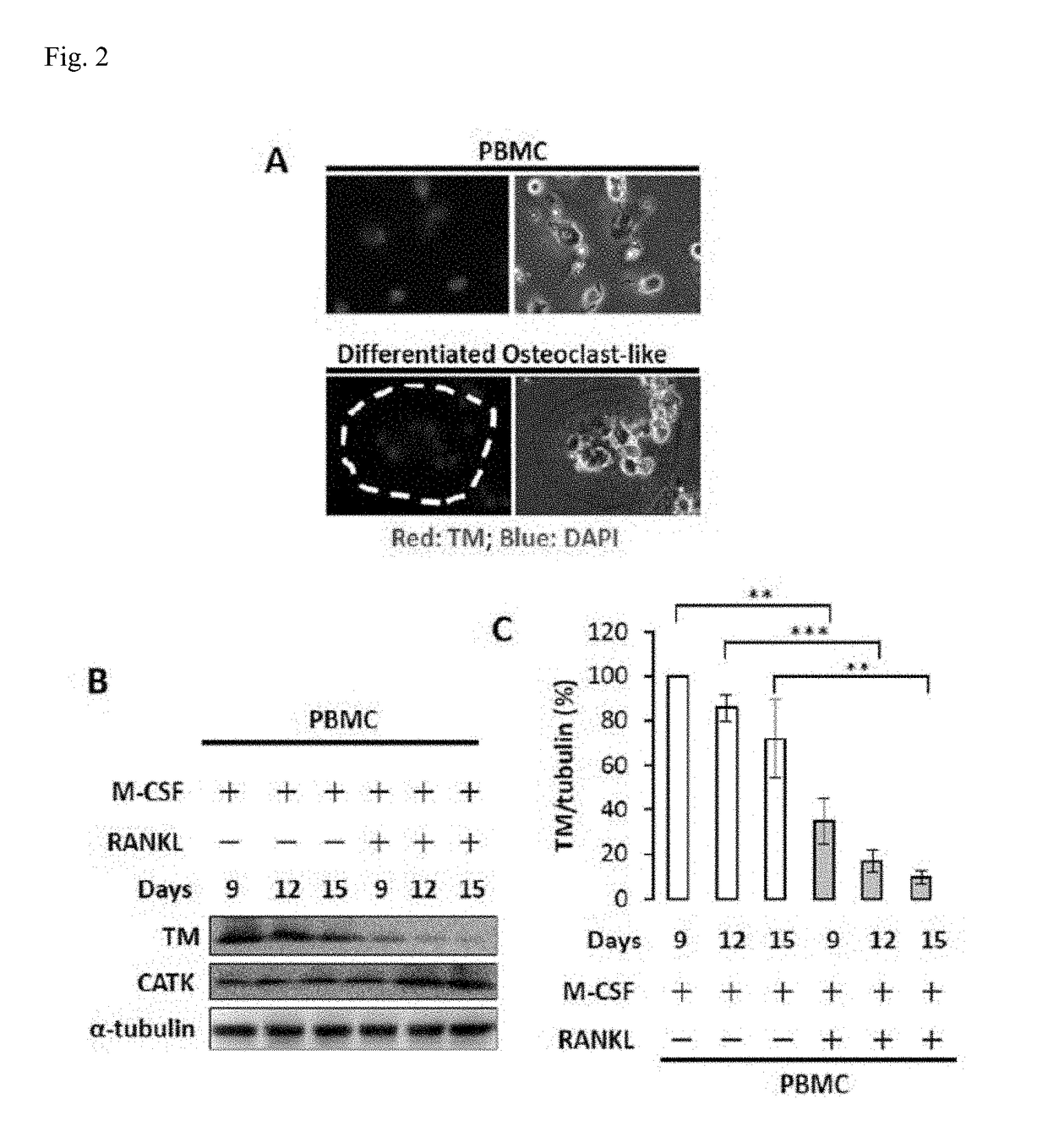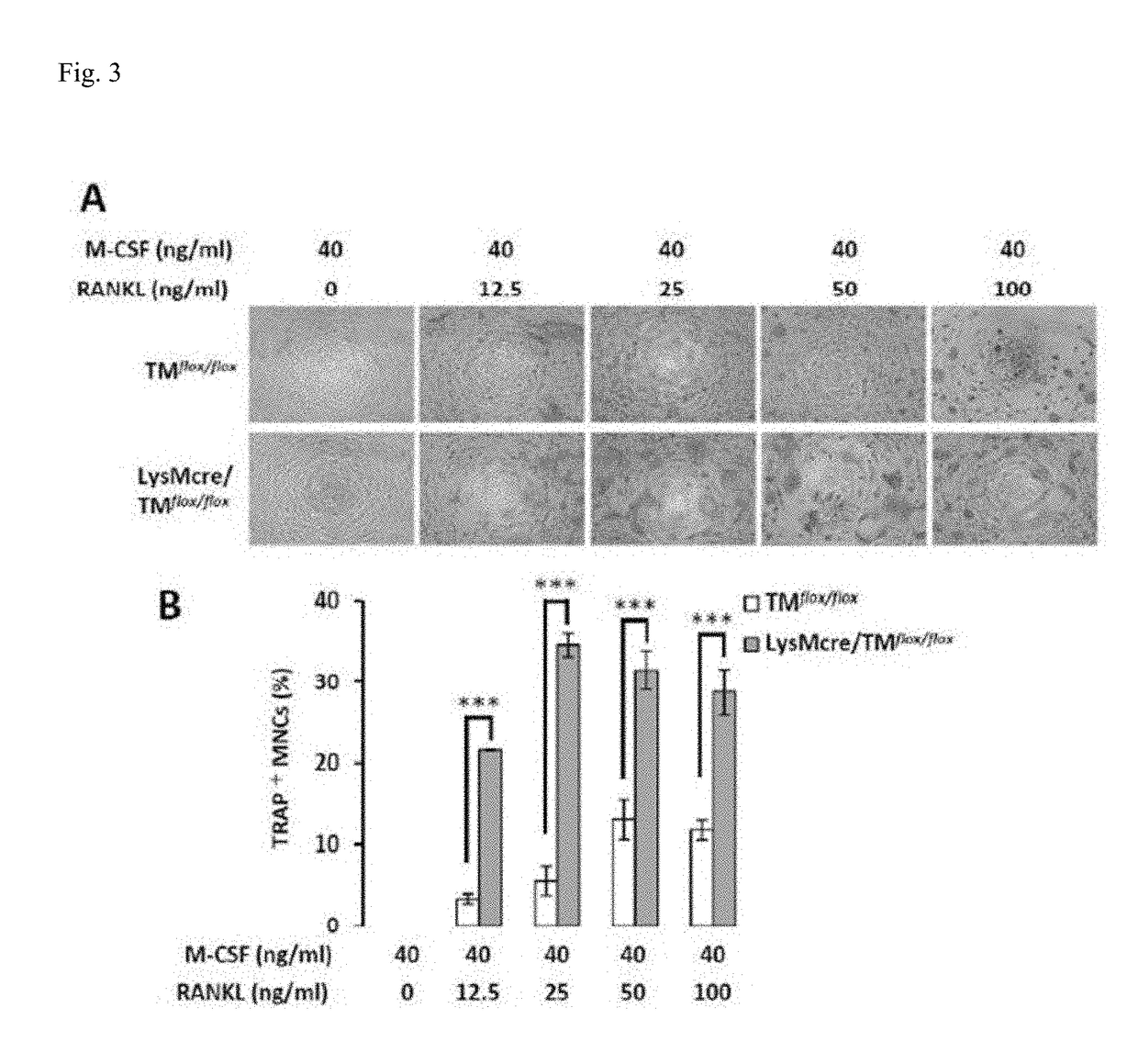Tmd1 protein for treating bone loss diseases
a bone loss disease and protein technology, applied in the field of bone loss diseases, can solve the problems of reduced bone density, back pain, limited ability to act,
- Summary
- Abstract
- Description
- Claims
- Application Information
AI Technical Summary
Benefits of technology
Problems solved by technology
Method used
Image
Examples
example 1
Methods and Materials
Experimental Animals
[0023]LysMcre / TMflox / flox mice with myeloid specific TM deletion were generated as previously reported. Compared with their controls (TMflox / flox mice), TM expression in the myeloid linage (macrophages and neutrophils), but not in other tissues and organs, was suppressed in LysMcre / TMflox / flox mice. Mice lacking the lectin-like domain of TM (TMLeD / LeD mice) and their controls (TMWT / LeD mice) were a gift from Dr. Conway. These B6-background mice were maintained in a pathogen-free animal facility at the Center of the National Cheng Kung University (NCKU). All animal protocols were approved by the Animal Care Committee of NCKU. Bilateral ovariectomy (OVX), as described previously, was performed at 8 weeks of age.
Cell Isolation
[0024]Human PBMCs were separated from whole blood using a Ficoll-Paque PLUS (GE Healthcare, Brussels, Belgium) gradient based on the manufacturer's instructions. Mouse bone marrow macrophages / monocytes (BM:Ms) were isolated...
PUM
| Property | Measurement | Unit |
|---|---|---|
| concentrations | aaaaa | aaaaa |
| emission wavelength | aaaaa | aaaaa |
| excitation wavelength | aaaaa | aaaaa |
Abstract
Description
Claims
Application Information
 Login to View More
Login to View More - R&D
- Intellectual Property
- Life Sciences
- Materials
- Tech Scout
- Unparalleled Data Quality
- Higher Quality Content
- 60% Fewer Hallucinations
Browse by: Latest US Patents, China's latest patents, Technical Efficacy Thesaurus, Application Domain, Technology Topic, Popular Technical Reports.
© 2025 PatSnap. All rights reserved.Legal|Privacy policy|Modern Slavery Act Transparency Statement|Sitemap|About US| Contact US: help@patsnap.com



